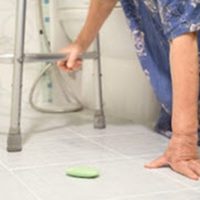What You Should Know About Nursing Home Slip-and-Fall Injuries

Falls, and their serious injuries, are very common in nursing homes. Over 60 percent of long-term care residents fall at least once. Most nursing home residents are physically frail. That’s why they’re in nursing homes. Some physical frailties include arthritis and mobility issues that contribute to the severity of, or risk of, a fall.
A Seattle premises liability lawyer can usually obtain maximum compensation in these cases. Maximum compensation is available if the pre-existing condition contributed to, as opposed to substantially caused, the fall. This compensation usually includes money for economic losses, such as medical bills, and noneconomic losses, such as pain and suffering.
Duty of Care
To determine the duty of care, Washington law, like the law in most other states, divides victims into three categories, depending on their relationship with the property owner.
- Invitee (duty of reasonable care, which includes a duty to make the property safe and conduct safety inspections),
- Licensee (duty to warn about latent, or hidden, fall injury hazards), and
- Trespasser (no duty of care, unless an exception, like the attractive nuisance rule, applies in the case).
Nursing home residents are invitees. They have permission to be at the nursing home, and they benefit the owner financially. Most nursing home guests are invitees as well. They have permission to be at the facility, and visits lift the spirits of nursing home residents, thus benefiting the owner.
These cases are slightly confusing if the categories overlap. Construction zone falls are a good example. Most residents have free range of the facility, but construction zones are off-limits. So, they’re normally invitees, but at some point, they become trespassers.
The classification often hinges on the wording of a warning sign and whether or not the victim could see the sign. Many older adults have poor vision.
Knowledge of Hazard
To prove liability (fault), an injured person must prove that the property owner had actual or constructive knowledge of the hazardous condition. Direct evidence of actual knowledge typically includes safety surveys and cleaning reports. If direct evidence is unavailable, circumstantial evidence of constructive knowledge (should have known) might be sufficient. The longer an injury hazard existed, the more likely it is that the owner knew about it, and should have done something about it.
Work With a Savvy King County Lawyer
Nursing home owners are responsible for nursing home safety. For a free consultation with an experienced personal injury lawyer in Seattle, contact Emerald Law Group. We do not charge upfront legal fees in these cases.
Source:
nfsi.org/nfsi-research/quick-facts/
